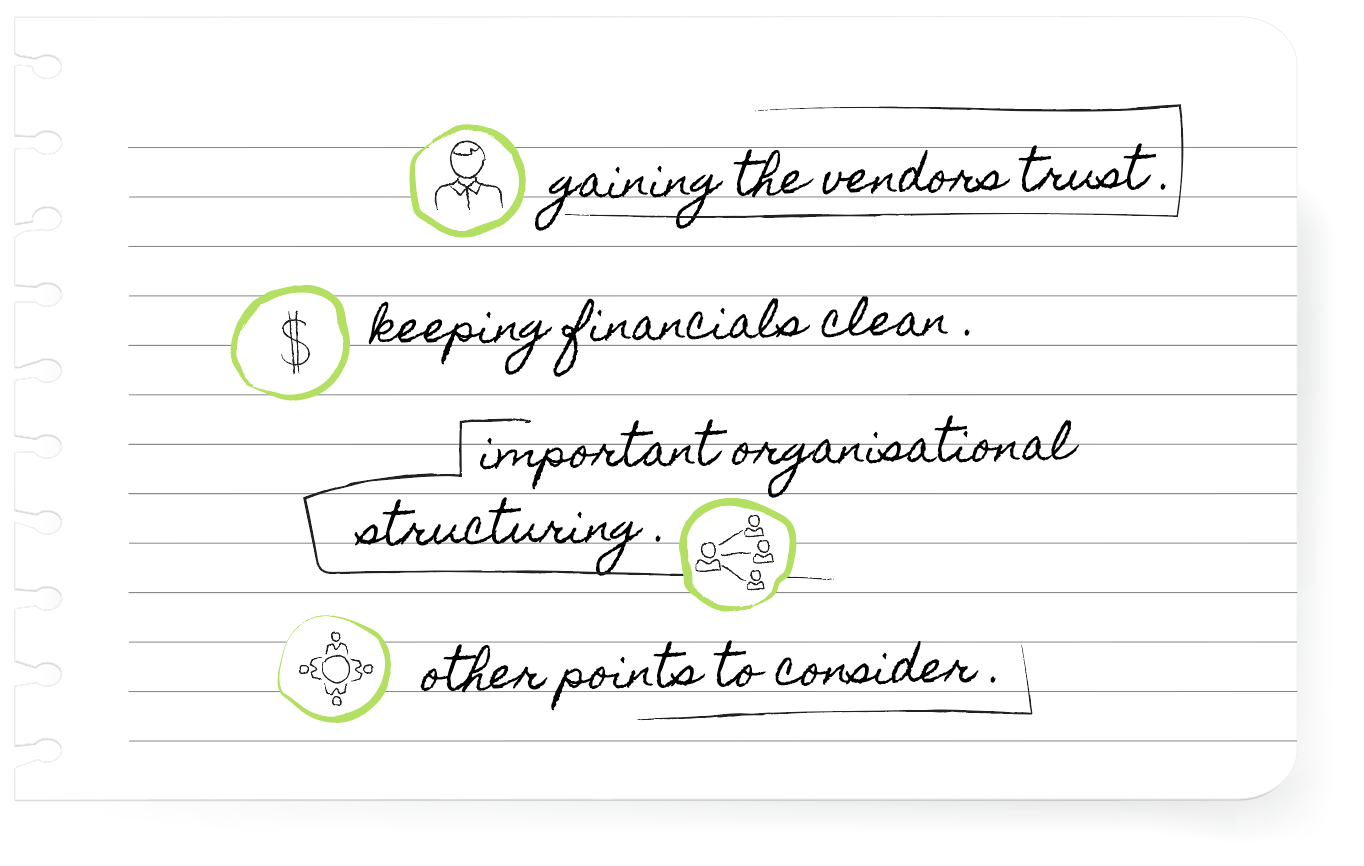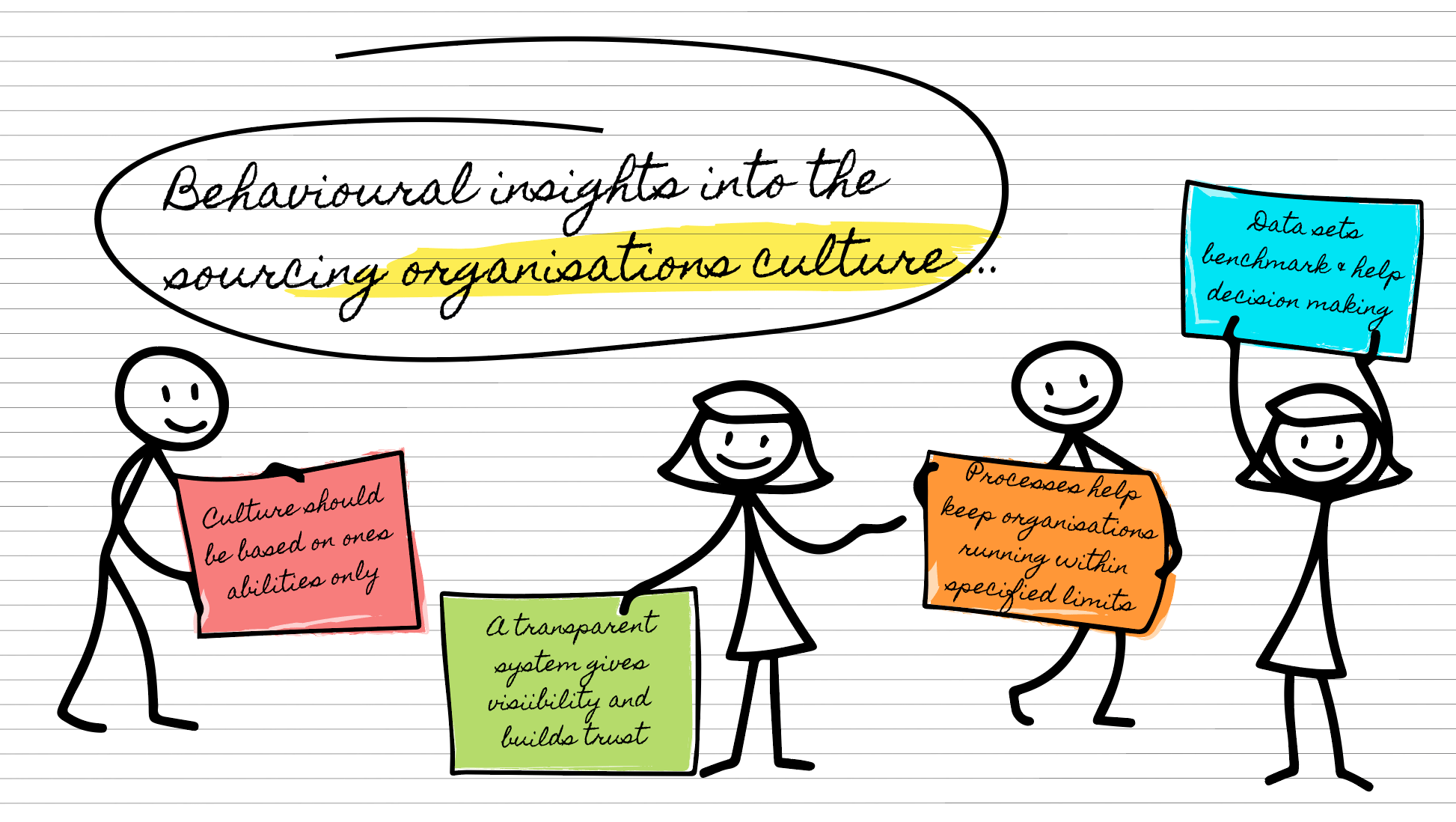I started blogging to share my learnings and experiences. To that end, I like discussing subjects, most people don’t talk about. This topic came about because a person new to the industry, but very senior, recently told me that he had heard that this industry had an integrity issue.
That set me thinking. And I don’t want to get defensive, but the fact is that it is very important to ensure, through processes and practices, that there is none or very little opportunity for leaks in the system.
In this blog I will share some good practices, that I have seen over the years. Loosely put, this blog is divided into,

I understand that these processes and steps cannot be implemented at scale in one go. This holds true for large companies as well as mid-size ones. To that end, I would recommend that financials be given the most importance, followed by vendor trust and lastly organisational structure.
However, let’s start by understanding why and how to Gain the Vendors Trust.
Gaining the vendors trust.
The vendor is the most important piece in this effort and it is important to ensure that they feel secure against backlash and guaranteed that there will be FairPlay. Mostly vendors deal with junior and mid level executives in the company and are at their mercy for business. Hence the following is very important in creating trust.
Build Senior Management Connect with Vendors.
Senior Management should regularly interact with vendors and sometimes directly ask them about their interaction with the company. Mostly at that time, vendors may not respond but may well come back anonymously. Or will know that they can approach the senior management team.
Build a redressal mechanism.
This will allow vendors to anonymously approach or complain without fear of backlash. It could be a drop box or some online complaint recording platform. But the important thing here is to ensure that the complainant is protected and his identity not revealed. Very few people come forward to complain and their interest must be protected.
External Intelligence Gathering.
Large companies can have their own teams, but smaller to medium sized organisations should utilise third party organisations that could do surveillance, study financial etc., in case of reportage or suspicion. Do not leave it to internal reviews and discussion.
Having done this, it’s important then to build processes that help in
KEEPING THE FINANCIALS CLEAN
It is important to understand the potential leak points and then putting in robust processes to manage those. These processes should be independently managed by a resource ideally attached to the finance team who manages this data and independently ensures that these processes are enforced.

Cost Tracking.
This should be managed in the following manner.
- Putting in place a core business - price tracking mechanism with a minimum of 3 years data availability. This should be backed by a dual region cost comparison and ideally placement.
- Ensure zero based costing - for fashion. With reasonable sample sizes being taken through multiple costings (cross costings) for the same style.
Process wise standardised costs.
It is important to negotiate and maintain,
- Rate cards for various processes across vendors and comparative charts across regions as well. These should be separately negotiated and compared within minimum two regions.
- Ensure that there is a scientifically done SMV’s and process mapping to ensure back up’s for cost allocations.
Trims.
- Keep regional trims vendors and a minimum of 2 or 3 for each region.
- Allow for competitive bidding in trims.
Consumption.
- Should be CAD based. Separately verified by Tech team.
- Similar consumptions compared between vendors.
Commercial Calls.
As we all know that there are many commercial call’s taken during the manufacturing process. These should be managed in 3 levels.
- The company or business head or
- Sourcing/ Category head or
- Quality/ Category head.
These calls should ideally not be taken by the junior merchants on their own.
Build Transparency.
- Ensure all cost breakdowns are in a common system with access to other stakeholders in the company as well.
It is good to reiterate once more that financial processes need to be kept robust and independently monitored. Now it is important to understand how to support this through proper organisational structuring.
IMPORTANT ORGANISATIONAL STRUCTURING
These are simple, yet very effective in ensuring that processes and relationships are kept professional.
Job Rotation.
It is very important that there is job rotation at junior levels.
- Yearly rotation of quality auditors (QA).
- And at least a two yearly rotation of Sourcing Merchant.
This avoids familiarity and keeps the relationships professional.
Gifting Policy.
Most companies have vague policies or maybe policies like ‘no gifts’. But these should be calibrated as every country has unique cultures and policies should recognise the same and be sensitive to that. For example flowers, cards or sweets may be acceptable in some cultures and refusing those may be insulting to others. But clear guidelines must be put in place to avoid ambiguity.
SOME OTHER POINTS TO CONSIDER
Regular Financial Audit.
This is a must and should be fully enabled and supported. I have noticed that most financial auditors stick to basic procurement logic, but it is important for them to understand the nuances of the industry, as mentioned in the financials section. These should be audited keeping those aspects in mind as well.
To conclude, I will say that what really matters is the culture created in the team. It should be one of meritocracy and transparency, process and data driven. This has to be led from the top by the senior management team through demonstrative leadership.

A lot of companies in our industry have product buying and merchandising teams who also manage sourcing. In my opinion, while that may be more cost effective for a small organisation, when companies become large, a dedicated and professional sourcing team is required to ensure that best practices are put in place.
Here, I must also caution against over adventurism in treating everyone with suspicion and creating an atmosphere of fear. That can prove counterproductive to business.
What are your experiences in this. Please do comment and share your thoughts with us.
I would like to thank Ms.Poonam Sood Lal for helping shape this article with her invaluable inputs.
RELATED TOPICS:#Apparel,Anindya Ray
Leave a comment
Our email address will not be published. Required fields are marked *







8 Comments
Gunish JainMay 22, 2021 at 10:35 am
Anindya, interesting article and something which is a real problem in our industry. The more data driven the decision making is the cleaner and transparent the sourcing setup will be. Constant benchmarking of prices is also important to ensure such problems are caught quickly.
Poonam Sood LalJan 25, 2021 at 13:24 pm
I think Karan has come up with an important point on vendor scorecard .This can be based on several factors --not only performance and contributors to the scorecard can be buying sousing and qa That would categorise the vendors level and not allow for favouritism
Umesh KamaladinniJan 19, 2021 at 10:34 am
Good article Sir, well explained about trust and transperncy..
Prashanth HVJan 17, 2021 at 13:05 pm
Very nicely enumerated all the points which very important for the integrity in the sourcing function. It is the responsibility of the management to ensure it is followed digigently.
Sarika AroraJan 17, 2021 at 12:01 pm
Great Topic Sir, not everyone is vocal about it, but it's high time to make changes in the structure and processes as suggested by you to ensure integrity is intact and served with honesty and perseverance of following best practices as a Top-down approach. Also would like to mention the sense of achievement and the respect which such a person generates from co-workers and people with who you are dealing. They become friends for life and a great support system like a family in the work space!!!
Nazmul HuqJan 17, 2021 at 10:53 am
Very well articulated and great learning?
Karan BajajJan 16, 2021 at 16:36 pm
Great Article and extremely well articulated. I feel a vendor scorecard would also be relevant here just to eliminate bias.
Manoj Kumar M.RJan 16, 2021 at 16:33 pm
Sir, open office & approachable management hierarchy, will definitely build the core strength of the organisation. Also the one platform communication flow from the management to down the line will always keep the importance of topic intact, which is much more effective than the information flow in branched organisation chart. Wonderful article Sir, Great Learning ???